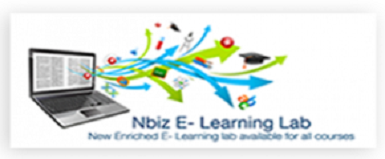Information Security Soultions

Our Clint Rating: 4.8 Start Based on 54 users
DLP Solutions
DLP is to make sure that we are combating, preventing or more appropriately mitigating the risks of data escaping from the organizations. In simple terms if you have directed DLP tool with the particular data, it will not be able to go outside the organization and it could start alarming on that particular data will be escaping the organization. However, statistically certain key projects of the DLP has failed because the information classification or the data classification which optimize DLP which is not in place.

Many organizations have just started the information classification exercises which is the base for the DLP implementation. For example in our home, we would keep our passports and sensitive documents in the anti-theft and water-proof box. To be able to do that, we are able to classify that passports as a very sensitive or at top-secret document and we wanted it to be on a very secure place. However when it comes to the organizations, there is no such classification that exist and the data is moving around in and out. Implementing the DLP solution is not at all going to be a successful approach in the long run.
Our Nbiz's security specialists delivers the security solutions by their visibility, awareness and protection
- Classification of Data and ensure the data is encrypted
- Implementation of data loss prevention solutions
- With a thorough understanding of this data, your organization can set the appropriate policies to protect it, and make risk-prioritized decisions about what assets need to be protected and at what cost.
- Mobile device Mangement solutions
- Deployment of endpoint solutions
Data loss prevention sounds like a great idea. But poor planning can run up costs, making how organizations choose tools an important-and meticulous-process.There are several things organizations should take into account when buying a DLP solution
To Avoid such difficulties we Nbiz is happy to assist in choosing and implement the best DLP solutions for your organization.Below are the few products which provides the Data loss prevention solutions (DLP)



For more details for the above products-Click here
Its by by focusing on the location, classification and monitoring of information at rest, in use and in motion, this solution can go far in helping an enterprise get a handle on what information it has, and in stopping the numerous leaks of information that occur each day. DLP is not a plug-and-play solution. The successful implementation of this technology requires significant preparation and diligent ongoing maintenance. Enterprises seeking to integrate and implement DLP should be prepared for a significant effort that, if done correctly, can greatly reduce risk to the organization
Many employees are turning to social networking, instant messaging and other Web 2.0 applications to keep up with consumer trends. DLP helps to prevent the accidental exposure of confidential information across these unsecure lines of communication while at the same time keeping them open for appropriate uses
DLP technology monitors all endpoint activity—whether on smartphones, tablets, laptops or desktops, on the corporate network or off. It can block emails or attachments containing confidential data, enforce policies on the transfer of data to removable media devices such as USB thumb drives, and even prevent activities such as printing, copying and pasting. DLP offers complete data visibility and control, ensuring that employees, third-party vendors, contractors and partners are prevented from leaking your data—intentionally or inadvertently
DLP technology provides IT and security staff with a 360-degree view of the location, flow and usage of data across the enterprise. It checks network actions against your organization’s security policies, and allows you to protect and control sensitive data, including customer information, personally identifiable information (PII), financial data and intellectual property. With a thorough understanding of this data, your organization can set the appropriate policies to protect it, and make risk-prioritized decisions about what assets need to be protected and at what cost



 Special Offers
Special Offers
 GET OUR BEST DEALS!
GET OUR BEST DEALS!